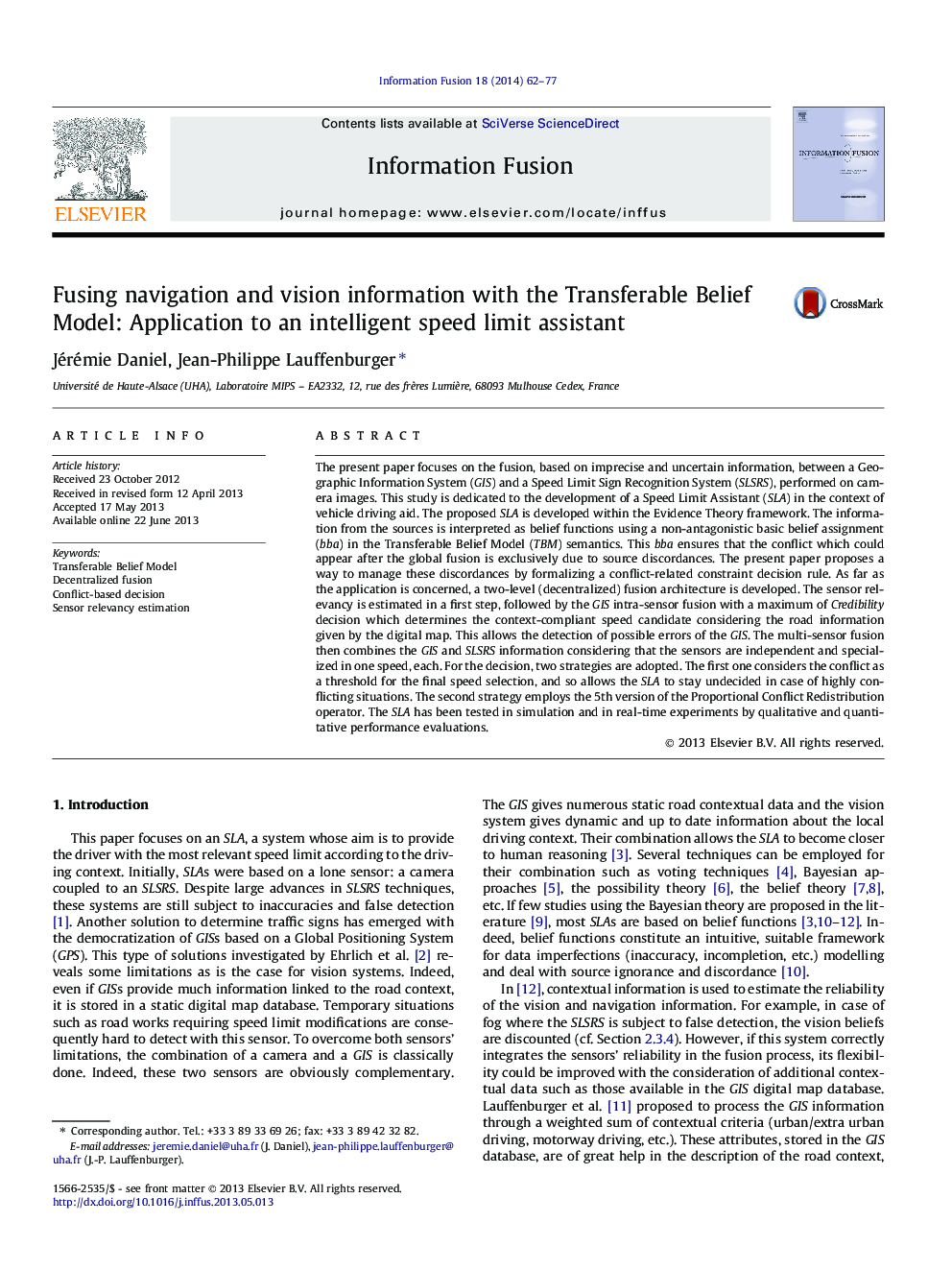| کد مقاله | کد نشریه | سال انتشار | مقاله انگلیسی | نسخه تمام متن |
|---|---|---|---|---|
| 528761 | 869605 | 2014 | 16 صفحه PDF | دانلود رایگان |
• A multi-level multi-sensor fusion for speed limit assistance is presented.
• A geographic information system and a traffic sign recognition system are fused in the TBM.
• The sources’ discordance management is proposed using a conflict-related decision rule.
• The decentralized structure corrects the sensor errors by an intra-sensor decision.
• Qualitative and quantitative analysis show the benefits of the proposed solution.
The present paper focuses on the fusion, based on imprecise and uncertain information, between a Geographic Information System (GIS) and a Speed Limit Sign Recognition System (SLSRS), performed on camera images. This study is dedicated to the development of a Speed Limit Assistant (SLA) in the context of vehicle driving aid. The proposed SLA is developed within the Evidence Theory framework. The information from the sources is interpreted as belief functions using a non-antagonistic basic belief assignment (bba) in the Transferable Belief Model (TBM) semantics. This bba ensures that the conflict which could appear after the global fusion is exclusively due to source discordances. The present paper proposes a way to manage these discordances by formalizing a conflict-related constraint decision rule. As far as the application is concerned, a two-level (decentralized) fusion architecture is developed. The sensor relevancy is estimated in a first step, followed by the GIS intra-sensor fusion with a maximum of Credibility decision which determines the context-compliant speed candidate considering the road information given by the digital map. This allows the detection of possible errors of the GIS. The multi-sensor fusion then combines the GIS and SLSRS information considering that the sensors are independent and specialized in one speed, each. For the decision, two strategies are adopted. The first one considers the conflict as a threshold for the final speed selection, and so allows the SLA to stay undecided in case of highly conflicting situations. The second strategy employs the 5th version of the Proportional Conflict Redistribution operator. The SLA has been tested in simulation and in real-time experiments by qualitative and quantitative performance evaluations.
Journal: Information Fusion - Volume 18, July 2014, Pages 62–77
